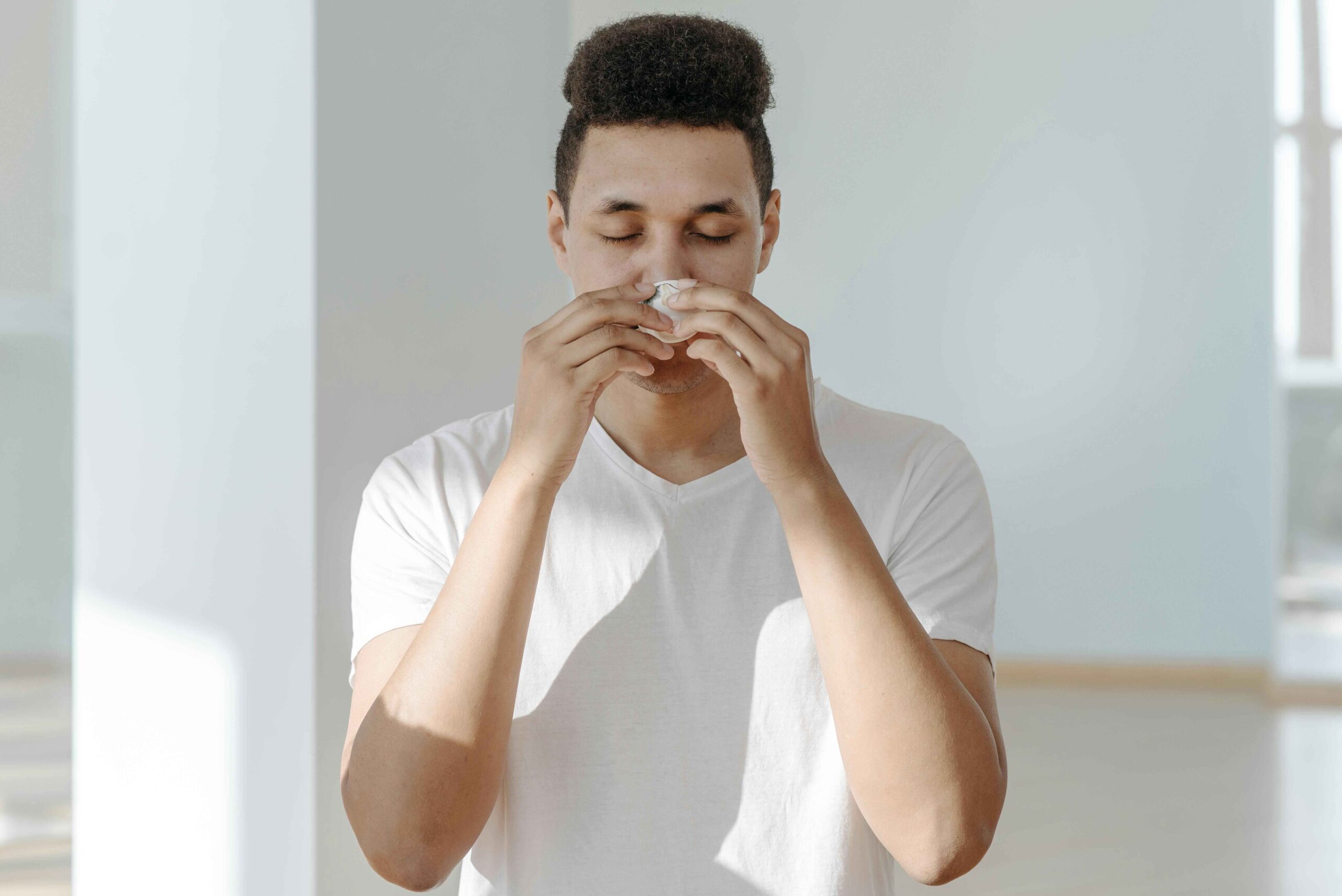“Symptom of allergies” can refer to a range of reactions the body experiences when exposed to allergens like pollen, dust mites, pet dander, or certain foods. These symptoms vary widely but often include sneezing, runny or stuffy nose, itching, hives, swelling, or in severe cases, difficulty breathing and anaphylaxis.
Understanding these symptoms is crucial for proper diagnosis and treatment, as allergies can significantly impact daily life and, in some cases, lead to serious health complications. Identifying and managing allergies can help individuals reduce the frequency and severity of symptoms, improving their overall quality of life.
Sneezing
Sneezing is a common symptom of allergies, triggered by the immune system’s response to allergens such as pollen, dust mites, pet dander, or mold. When these allergens enter the nose, they can irritate the mucous membranes, causing the body to release histamine. Histamine is a chemical that causes the blood vessels in the nose to swell and the nasal tissues to become inflamed, leading to the characteristic tickling sensation that precedes a sneeze.
Sneezing is the body’s way of expelling these irritants and clearing the nasal passages. While occasional sneezing is normal, frequent or persistent sneezing, especially when accompanied by other allergy symptoms like a runny or stuffy nose, may indicate an allergic reaction that requires management to alleviate discomfort and improve quality of life.

Runny or Stuffy Nose
A runny or stuffy nose is a most symptoms of allergies, known medically as allergic rhinitis. When allergens such as pollen, dust mites, or pet dander are inhaled, the immune system may overreact, leading to inflammation of the nasal passages. This inflammation causes the blood vessels in the nose to swell and produce excess mucus, resulting in a runny or congested nose.
Individuals with allergic rhinitis may also experience itching in the nose, throat, and eyes. These symptoms can be bothersome and affect quality of life, but they can often be managed with medication and avoidance of allergens.
Watery, Itchy Eyes
Watery, itchy eyes are a symptom of allergies, particularly allergic rhinitis or hay fever. When allergens such as pollen, dust mites, or pet dander come into contact with the eyes, they can trigger an immune response that leads to itching, redness, and tearing. This allergic reaction occurs when the immune system mistakenly identifies these harmless substances as threats.
The itching sensation can be intense and often leads to rubbing of the eyes, which can further exacerbate the symptoms. In addition to itching and watering, allergies can also cause the eyes to feel dry and irritated. Managing allergies through allergen avoidance, medications, and other treatments can help alleviate these uncomfortable eye symptoms.
Wheezing and Shortness of Breath
Wheezing and shortness of breath are common symptom of allergies, particularly in individuals with asthma or allergic asthma. When allergens such as pollen, dust mites, or pet dander are inhaled, they can trigger inflammation in the airways, leading to narrowing and constriction. This can result in difficulty breathing, a sensation of tightness in the chest, and wheezing, which is a high-pitched whistling sound that occurs during exhalation.
In some cases, wheezing and shortness of breath can be severe and may indicate an asthma attack, which requires immediate medical attention. If you experience these symptoms, especially during allergy season or after exposure to allergens, it’s important to seek medical advice to determine the underlying cause and receive appropriate treatment.
Rashes or Hives
Rashes or hives are common symptom of allergies, often caused by the body’s immune response to allergens such as food, medications, insect stings, or latex. These allergic reactions typically manifest as raised, red, and itchy welts on the skin, which can vary in size and shape. The itching sensation can be intense and may lead to discomfort or even pain.
In some cases, hives can appear suddenly and disappear within hours, while in others, they may persist for days or even weeks. It’s important to identify and avoid the allergen triggering the reaction to prevent future outbreaks and seek medical attention if the symptoms are severe or persistent.
Sinus Pressure
Sinus pressure is a common symptom of allergies, especially allergic rhinitis or hay fever. When allergens such as pollen, dust mites, or pet dander are inhaled, they can trigger an inflammatory response in the nasal passages, leading to swelling and congestion. This inflammation can cause the sinus passages to become blocked, leading to a buildup of pressure and discomfort in the face and head.
Individuals experiencing sinus pressure due to allergies may also experience other symptoms such as a runny or stuffy nose, sneezing, and itchy eyes. Managing allergies through avoidance of triggers and appropriate medications can help alleviate sinus pressure and improve overall comfort.

Headache
Headaches are a common symptom of allergies, often resulting from sinus congestion and pressure caused by allergens. When allergens such as pollen, dust, or pet dander are inhaled, they can irritate the nasal passages and sinuses, leading to inflammation and congestion. This congestion can cause a buildup of pressure in the sinuses, which may result in a headache.
Additionally, allergies can trigger a release of histamine in the body, which can also contribute to headache development. Headaches caused by allergies are typically described as a dull, throbbing pain in the forehead, temples, or behind the eyes. Managing allergies through avoidance of triggers and appropriate medications can help alleviate headache symptoms associated with allergies.
Swelling
Swelling, a common symptom of allergies, can occur in various parts of the body, including the face, lips, tongue, or throat. This swelling, known as angioedema, is often a result of the body’s immune response to allergens such as food, medications, insect stings, or latex.
In some cases, swelling can be severe and lead to difficulty breathing or swallowing, indicating a potentially life-threatening condition called anaphylaxis. It’s essential for individuals experiencing swelling due to allergies to seek immediate medical attention to prevent serious complications.

FAQ
What are the common symptom of allergies?
Common symptom of allergies include sneezing, runny or stuffy nose, watery or itchy eyes, coughing, wheezing, shortness of breath, rashes or hives, swelling in the face, lips, tongue, or throat, fatigue, headache, and sinus pressure. These symptoms can vary depending on the allergen and the individual’s immune response.
Can allergies cause swelling?
Yes, allergies can cause swelling, particularly in the face, lips, tongue, or throat. This swelling, known as angioedema, can be a sign of a severe allergic reaction called anaphylaxis, which requires immediate medical attention.
How do I know if my symptoms are due to allergies or something else?
Allergy symptoms can sometimes be similar to those of other conditions, such as the common cold or sinus infections. However, allergy symptoms are usually more persistent and can occur seasonally or in response to specific triggers, such as pollen or pet dander. If you are unsure about your symptoms, it’s best to consult with a healthcare professional for an accurate diagnosis.
What should I do if I think I have allergies?
If you suspect you have allergies, it’s important to consult with a healthcare professional for an accurate diagnosis. They may recommend allergy testing to identify the specific allergen(s) causing your symptoms. Once the allergen(s) are identified, your healthcare provider can recommend a treatment plan, which may include allergen avoidance, medications, or allergy shots (immunotherapy).

